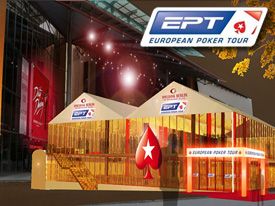 In Part 1 of this series (sorry it took so long to get Part 2 up) I discussed some of the ways tournament poker has strayed from its true path, and the unintended consequences this straying from the path has brought on – not unlike Bombur falling into the river in Mirkwood.
In Part 1 of this series (sorry it took so long to get Part 2 up) I discussed some of the ways tournament poker has strayed from its true path, and the unintended consequences this straying from the path has brought on – not unlike Bombur falling into the river in Mirkwood.
In this installment I’ll take a look at what can be done to correct some of these problems.
Tours need to get on the same page
The first improvement is one that will take a bit of sacrifice from a number of different companies.
The numerous major poker tours need to get on the same page.
I’m not really talking about the regional tours with $1,500 buy-in Main Events, as these tournaments tend to draw more from the local community than from the band of travelling tournament professionals who tend to pick and choose.
The goal should be to get all of these players at your stop, and the only way to do that is to let your competitors have a turn as well.
The tours that need to get on the same page are the WPT, the EPT, the WSOP, and major singular events such as the Aussie Millions and Seminole Hard Rock Poker Showdown.
Scheduling conflicts are hurting all of their bottom lines, and hurting the entire tournament poker economy, as players are travelling more and more, and finding the prize-pools growing smaller and smaller as players are all going their separate ways, choosing one tournament or another for a variety of reasons.
The simplest way to help alleviate this would be to cut back on “premier” stops and make them all $10k buy-ins (or at least $5k buy-ins).
In order for this to work the WSOP, EPT, and WSOP (and Aussie Millions) would have to work out their schedules together, to insure the top pros could play all of the “major” tournaments without being on the road 300 days a year and without having to choose one tournament over another.
The WPT and EPT could still host their other tournament series (with smaller buy-ins) but there needs to be some type of communication to make sure the attendance at preeminent events are not being impeded by robust competition.
This would also allow them to stop turning to gimmicks like Quantum Reloads and reentries to boost prize-pools.
Length and structure is important
In addition to requiring more travel and offering smaller prize-pools, the tournaments are also lasting longer. This does increase the skill component of the event, but at the same time it cuts down on the number of tournaments a professional player can enter, and increases their expenses as they are spending more time in hotels.
What I want to see is tournament poker once again go back to its roots. One and sometimes two-day events (with a final table on Day 2 if needed), and Main Events that last no more than three to five days depending on the importance.
This lunacy that a $1,000 tournament at the Podunk casino needs to last three full days, and has to have specific blind levels is asanine.
The idea that in order to play in the WPT Championship you would need to take two weeks off from work, and that you could play four days of the tournament without even making the money is utter madness. No “fun” player is going to agree to these terms.
Casual players actually want the tournaments to go faster! Not only because it offers them a better chance to get lucky and win, but because their real-world schedule demands it. These people have lives, of which poker is a small part, not a week-long commitment of 12 hour days.
Tournament pros with nothing else to do but play tournaments certainly want it this way (more skill equals better for them), but what they don’t realize is they are slowly cutting off their food source. Casual players simply find these slow, plodding structures unappealing, and more importantly, they have come to realize how much it benefits the professionals.
As much of an advantage you may think you’re receiving from a slow structure it’s minimal compared to the advantage you get from playing against soft fields. Good games beats slightly better structures every time.
If you want to make tournament poker appealing to these players you have to give up some of your equity, but that should be fine so long as the additional dead money from speeding up the tournament offsets it, which it will.
It’s counterintuitive, but giving up an edge can lead to a greater edge.
Casinos need to go back to tournaments as loss leader
Finally, casinos need to see poker tournaments for what they are, loss leaders. they need to stop the reentries and slow structures (demand the tours adopt certain structures) and make sure that the events are starting on busy days when the busted players can head to other parts of the casino.
Yes, the Poker Boom years allowed casinos to turn tournaments into profitable offerings, but that time is over. Now it’s time to once again change, and use them (for the most part) as loss leaders.
100% up to $3,000 Bonus
Bovada is our most recommended ONLINE CASINO and POKER ROOM for US players with excellent deposit options. Get your 100% signup bonus today.


Leave a Reply
You must be logged in to post a comment.